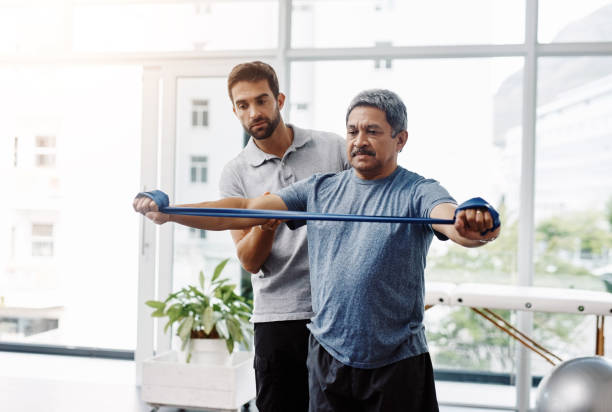Physiotherapy is a practical, non-invasive niche therapy of disease, injury and illness. It helps in restoring mobility, health and function to the affected region using specialised techniques. Physiotherapy employs clinically proven and experimental techniques for therapy and the application of new findings on the body’s mechanisms. It also makes use of machines to help patients resume normal activities. With modern advances in technology, physiotherapy has also come to terms with computerised imaging systems that provide detailed images of the skeletal, muscular, vascular and nervous systems.
Physiotherapy involves adjustment, correction, restoration and maintenance of mobility after an injury or after a surgical procedure. The purpose of physiotherapy is to help a patient achieve independence by enabling them to do things independently. For patients recovering from a permanent physical impairment, physiotherapy plays an essential role since it allows them to live independently. Physiotherapy also employs non-surgical techniques like stretching, strengthening, balance and coordination activities. This all helps in promoting muscular strength, endurance, speed and motion. As a result, a patient can resume their normal daily activities after physiotherapy.

One of the key goals of physiotherapy is to promote healing of the injured tissues and provide pain relief by managing pain and reducing inflammation. In addition, it aims to improve the lung capacity of a patient by increasing the flow of air in the lungs. Physiotherapists perform diagnostic and therapeutic tests to assess lung function, muscle strength, functional stability and posture. After the assessment, they recommend interventions for patients in need of physiotherapy.
There are different types of physiotherapy techniques applicable for different injuries. They include exercise, physical support, physiotherapy and manual resistance training. Exercises help to improve flexibility, strength and muscle coordination. Physical support is provided for injuries related to the musculoskeletal system, such as arthritis, whiplash, shoulder injuries, neck pain, hip and knee problems, etc. Manual resistance training includes exercises that target a single joint of the body.
Exercises and other exercises that strengthen muscles, build strength and increase muscle power are recommended for patients with muscle weakness, joint stiffness and limited range of motion. In addition, these exercises help provide pain relief. Muscles are restored to their pre-injury condition after regular exercise. Physiotherapists recommend exercises that train the muscles to move independently of the joints, resulting in increased mobility.
For patients who have sustained a lasting physical limitation, physio Adelaide usually involves physiotherapy combined with surgery. In surgery, the physiotherapist and the surgeon develop a physiotherapy program that will facilitate fast recovery after surgery. The program may comprise exercises to rehabilitate the patient’s range of motion or increase their total strength.
Even after surgery, many people require some form of pain management. A physiotherapist can offer effective pain management. This includes advice on exercise and lifestyle changes. It also includes advice on post-operative exercises and methods of weight control. As many patients continue to experience some pain after surgery, the physio might also suggest the need for an MRI to detect degenerative or structural changes that could regain mobility. For many people, the use of pain management techniques helps to prevent a recurrence of their injury.